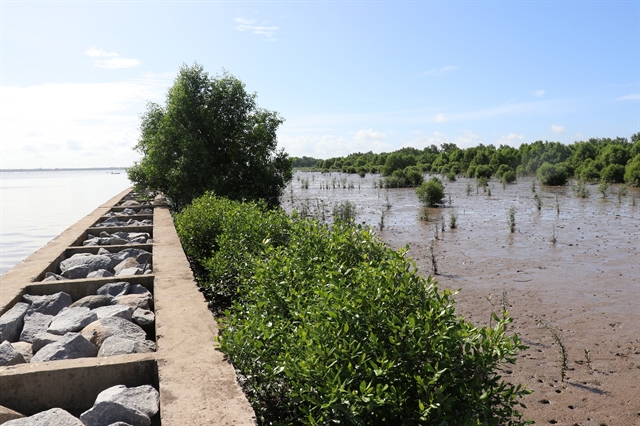 Environment
Environment

The Cửu Long (Mekong) Delta province of Kiên Giang plans to build 200 erosion prevention works along its coasts and rivers by 2030.

|
| Mangrove forests being planted inside an embankment along the coast in Kiên Giang Province’s An Biên District. – VNA/VNS Photo Lê Huy Hải |
KIÊN GIANG – The Cửu Long (Mekong) Delta province of Kiên Giang plans to build 200 erosion prevention works along its coasts and rivers by 2030.
They are expected to cost more than VNĐ17.4 trillion (US$750 million), which will be provided by the central and local governments.
Of them 182 will be to prevent riverine erosion.
The 18 coastal erosion prevention projects will see 71km of dykes built by 2025, by when another 72 projects involving 480km of river embankments will also be completed.
The remaining 110 projects will build more than 568km of river embankments in 2026-30.
Acording to Lê Quốc Anh, deputy chairman of the province People’s Committee, the province has taken various erosion prevention measures in past years, and they also helped protect the environment, mangrove forests and protective forests and create livelihoods for people.
The province has strengthened advocacy activities to enhance public awareness of the task of preventing erosion.
It monitors and promptly publicises the risk of erosion, and uses technology and new materials to prevent erosion.
It installs warning boards at erosion – prone areas and has cracked down on mining of sand in rivers, coasts and islands to prevent overexploitation.
It aims to relocate 90 per cent of families living in erosion – prone areas by 2030.
It is reviving mangrove forests and growing new ones on a total of 644ha as part of work to build coastal embankments.
The province's Forest Management Board plans to grow 63ha of mangroves on mud flats inside wave breakers in An Biên District in 2022-25.
The province has 200km of dykes and 8,300ha of mangrove forests along the coast, according to its Irrigation Sub-department.
It has allocated portions of the forests to local households to protect them and also exploit certain resources.
The households protect the forests and breed aquatic species in them to earn an income. – VNS




